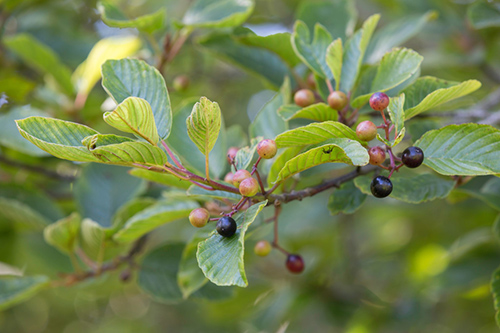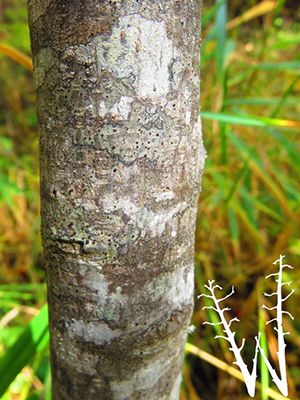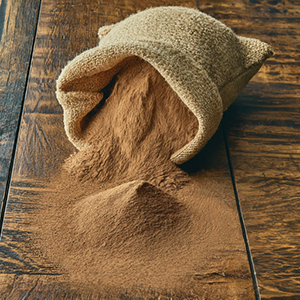Contents
The cascara sagrada bark was already used by native American Indians, and it soon drew the attention of the Spaniards who colonized California. Like the bark of the alder buckthorn, a similar species that grows in Europe, cascara sagrada must not be consumed until it has been dried for one year since, when fresh, it has toxic effects.

Cascara Sagrada Scientific Facts
- Scientific Name – Rhamnus purshiana D.C.
- Other Names – Sacred bark, Californian buckthorn.
- French – Cascara.
- Spanish – Cáscara sagrada.
- Environment – Coniferous forests on the West Coast of the USA and Canada. It does not grow in Europe.
- Description—A tree or shrub of the Rhamnaceae family grows from 2 to 6 m high and has oval leaves with prominent nerves. Its bark is greyish and often covered by lichen.
- Parts of the plant used medicinally – The bark of the trunk and branches, when dry.
Warning
Use this plant carefully during pregnancy, breastfeeding, menstruation, and hemorrhoid crises, as it produces pelvic congestion.

Healing Properties
The bark of this tree contains anthraquinone glycosides (emodin, chrysophine), similar to those of the alder buckthorn, and other glycosides (aloin, chrysaloin). Its intense purgative effect, more drastic than that of the alder buckthorn, is due to the combined action of all these active components.
Though a potent laxative, in therapeutic doses, it is pretty well tolerated and does not produce cramps or colitis. Unlike chemical laxatives, it can be used for extended periods. This plant is thus ideal for chronic constipation or intestinal atony, especially for elderly people. It also has mild cholagogue and eupeptic properties, thus promoting emptying the gall bladder and easing digestion.

Cascara sagrada is the best herbal laxative for people suffering from chronic constipation. It is one of the best, most typical, and safest plant-based laxatives. It stimulates peristalsis by irritating the bowels. However, if overused, it can become habit-forming. The bitter properties of the plant stimulate secretions of the whole digestive tract—including the pancreas, stomach, gallbladder, and liver.
Cascara sagrada is beneficial for gallbladder problems, mainly enlarged liver and intestinal gas. Additionally, it is used for jaundice, indigestion, and gastric and intestinal disorders. Because of the herb’s overwhelming bitterness, please do not take it as a tea to use it for a mild laxative effect; instead, use capsules or tincture.
Note: Ensure the bark is at least one year old before use. Please do not confuse cascara sagrada (Rhamnus purshiana), at times called “buckthorn,” with (Rhamnus frangula). They’re both helpful medicinal herbs but different.
How to use Cascara Sagrada
- Bark powder – The recommended dose is 0.2 to 0.3 grams twice daily.
- Infusion, with three grams of bark per cup of water.
Decoction (bark) – Simmer for five to fifteen minutes. Take one teaspoon three to four times daily before meals or one cup during the day, cold. Tincture – Take five to twenty drops, morning and evening. Fluid Extract – Take ½ to one teaspoon at night before bed. Syrup – Take ½ to two teaspoons two to three times a day. Powder – Take six to twelve #0 capsules (10 to 100 grains) daily.
DISCLAIMER: All content on this website is presented solely for educational and informational objectives. Do not rely on the information provided as a replacement for advice, diagnosis, or treatment from a qualified medical expert. If you are pregnant, nursing, or have any preexisting medical concerns, talk to your doctor before using any herbal or natural medicines.
REFERENCES
- George D. Pamplona-Roger, M.D. “Encyclopedia of Medicinal Plants.” George D. Pamplona-Roger, M.D. Encyclopedia of Medicinal Plants. Ed. Francesc X. Gelabert. vols. 2 San Fernando de Henares: Editorial Safeliz, 2000. 528. Print.
- Vance Ferrell Harold M. Cherne, M.D. The Natural Remedies Encyclopedia [Book]. – Altamont, TN: Harvestime Books, 2010. – Vol. Seventh Edition: 7: pp. 149.
- University of Michigan Medicine. (2021). Cascara Sagrada. https://www.uofmhealth.org/health-library/hn-2074005
